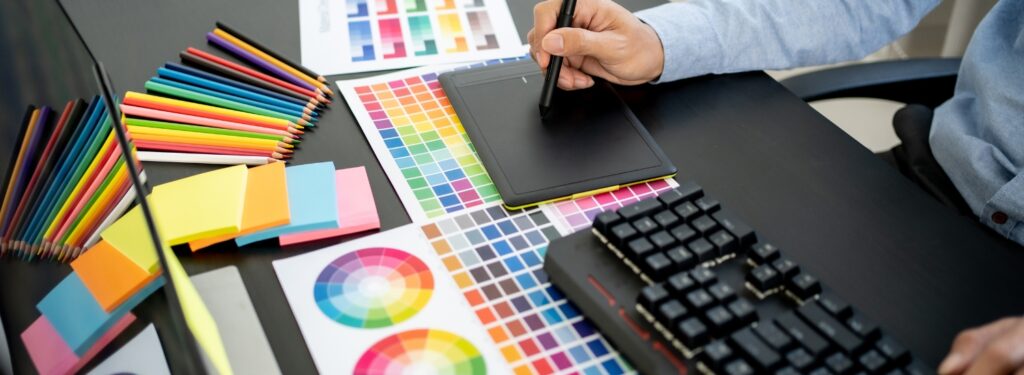Color is more than just decoration—it’s communication. The right color combination can make a design feel inviting, bold, trustworthy, or innovative. Whether you’re designing a logo, website, marketing material, or digital product, choosing the perfect palette is essential. A Color Palette Combinations Creator helps you generate harmonious, impactful color schemes with ease, even if you’re not a designer.
With intuitive tools and intelligent algorithms, these creators simplify the decision-making process and give your brand or project the visual consistency it deserves.
Table of Contents
- Why color palettes matter in design
- What is a color palette combinations creator?
- Popular use cases for palette creators
- How to generate the right palette
- Key features to look for in a palette tool
- Tips for using palettes effectively in design
- Integrating your palette with brand identity
- Call to Action: Get Custom Palettes with Logo In Hours
- Final Thoughts
1. Why color palettes matter in design
Colors influence how people perceive your message. A well-planned palette strengthens branding, improves readability, and enhances emotional response. From subtle neutrals to vibrant contrasts, color choices play a major role in how users connect with your design.
Consistent color usage builds recognition and professionalism. When you use the same colors across platforms, your brand feels more intentional and trustworthy. That’s why starting with the right palette is so important.
2. What is a color palette combinations creator?
A color palette combinations creator is an online tool or app that helps you generate coordinated color schemes. These tools use color theory, data science, and user input to build balanced combinations—from two-tone minimalist themes to complex five-color palettes.
Typically, you can enter a starting color or choose a desired mood (e.g., bold, calm, elegant), and the tool will suggest matching shades using hue, saturation, and brightness rules. Many even allow you to preview the palette in real design mockups like websites or business cards.
3. Popular use cases for palette creators
Color palette generators are widely used across industries and creative projects. Some common uses include:
-
Logo and branding design
-
Website color planning
-
App UI/UX design
-
Marketing content and social media posts
-
Event themes and product packaging
-
Digital art and illustrations
Whether you’re designing for a startup or a personal project, having a reliable color scheme sets the foundation for a polished, cohesive look.
4. How to generate the right palette
To begin, consider your purpose and target audience. Are you trying to evoke trust, excitement, elegance, or playfulness? Next, select a base color that aligns with that tone. Then use the Color Palette Combinations Creator to explore complementary, analogous, triadic, or split-complementary schemes.
Furthermore, some tools allow you to lock in certain colors and generate the rest around them—helping you maintain brand consistency while adding variety.
5. Key features to look for in a palette tool
Not all palette creators are built the same. Here are essential features to look for:
-
Hex and RGB code support for digital accuracy
-
Live preview options to visualize usage
-
Exportable palettes for design tools like Adobe, Canva, or Figma
-
Mood-based or industry-based suggestions
-
Accessibility testing for contrast and readability
-
Ability to save or share palettes easily
Ideally, the tool should be easy to use and flexible enough to serve both beginners and professionals.
6. Tips for using palettes effectively in design
Once you’ve finalized your color palette, it’s important to use it strategically to maintain consistency and clarity. Begin by designating roles for each color—primary, secondary, background, accent, and text. For instance, your main brand color should dominate key visuals, while accent shades add contrast and visual hierarchy.
Additionally, be mindful of contrast, especially for text and buttons, to ensure accessibility and readability. To tie everything together, reuse your selected colors consistently across design elements like headers, icons, and calls to action (CTAs) for a unified look.
7. Integrating your palette with brand identity
Just as importantly, your chosen palette should reflect your brand’s core personality and values. If your brand leans toward fun and playful, opt for bright, energetic hues. On the other hand, a luxury or premium feel calls for muted tones, rich jewel colors, black, or metallics like gold.
Once your palette is defined, incorporate it into your brand style guide and apply it across all visual touchpoints—your website, social media posts, packaging, and print materials. Over time, when used consistently, your color palette will evolve into a recognizable visual signature for your brand.
8. Call to Action: Get Custom Palettes with Logo In Hours
Not sure where to start with your color choices? At Logo In Hours, we offer more than just logo design. We specialize in crafting custom color palettes that align with your brand’s identity, target audience, and industry trends.
Whether you need something bold and vibrant or calm and sophisticated, our expert designers can create a personalized palette that brings cohesion and character to all your visuals. Request your tailored palette today—and start designing with clarity and confidence.
9. Final Thoughts
Designing with the right colors can transform how people experience your brand or project. A Color Palette Combinations Creator empowers you to choose confidently, design more effectively, and express your message with style.
Whether you’re a startup founder, content creator, or small business owner, great design starts with smart color choices. Use the tools available—or let the experts at Logo In Hours guide you to a palette that speaks for your brand.





